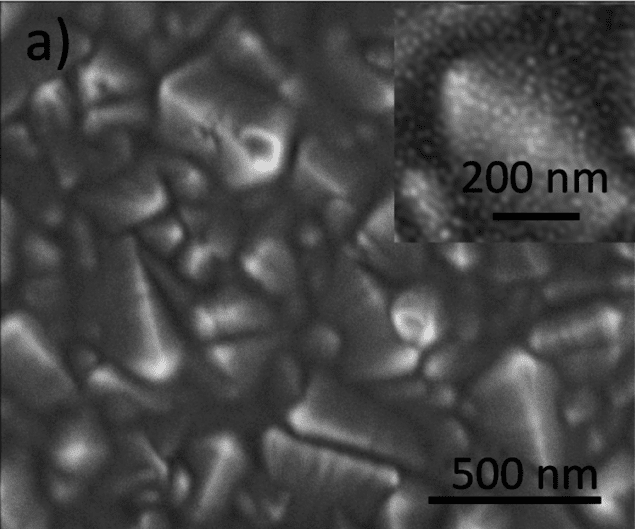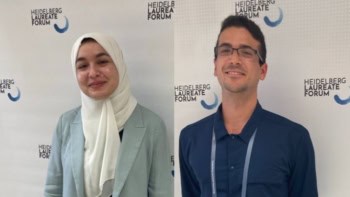
Researchers in China and Switzerland have succeeded in making highly efficient metal-halide perovskite solar cells containing fluoride-doped tin oxide nanocrystals. The new cells boast a photovoltaic efficiency as high as 20.2% and an open-circuit voltage of 1.13 V and can be fabricated in a simple, low-temperature solution-process.
Metal-halide perovskites have the chemical formula ABX3, where A is typically Cs, methylammonium (MA), or formamidinium (FA), B is Pb or Sn, and X is I, Br, or Cl). They are one of the most promising thin-film solar-cell materials thanks to the fact that they can absorb light over a broad range of solar spectrum wavelengths. Charge carriers (electrons and holes) can also diffuse through them quickly and over long lengths. All these good properties mean that researchers have been able to increase the power conversion efficiency (PCE) of solar cells made from these materials from an initial 3.8% (in 2009) to nearly 23% today. This makes their PCE comparable to that of silicon.
Open-circuit voltage lower than expected
Recently, researchers have started to finely tune electron transport layers (ETLs), such as those made from titanium dioxide nanocrystal thin films, close to planar perovskite materials to further increase charge carrier transport. There is a problem however in that the open-circuit voltage (VOC) of devices made from certain perovskites (those with a bandgap of between 1.59 and 1.63 eV) and these ELTs remains lower than that predicted by theory.
The VOC depends on several factors, including the energy level difference between the ELTs and the perovskite light absorber materials. A big difference may lower the VOC.
“To increase VOC, we thus need to build up a functional interface with well-matched energy bands to avoid excessive band offset while accelerating charge carrier extraction and transport,” explains co-team leader Mingkui Wang of Huazhong University of Science and Technology in Hubei.
Fluoride-doped tin oxide bilayer ELT
The researchers say they have now made a new ETL material from fluoride-doped tin oxide (F:SnO2) to do just this. They fabricated perovskite solar cells using a 50-nm-thick F:SnO2 layer to contact a 500-nm-thick layer of (FAPb3)0.85(MAPbBr3)0.15 using a simple low-temperature solution-process technique. They then thermally annealed the films at 180 °C for one hour in air.
Wang and colleagues were able to determine that the optical bandgap slightly broadens with F doping levels. “These observations can be explained with the filling of states in the conduction band of the perovskite film thanks to quasi-Fermi level lifting as a function of increased charge concentration (according to the ‘Burstein-Moss’ effect),” explains Wang.
The quasi-Fermi level is the Fermi level that describes the population of electrons separately in the conduction band and valence band when they are displaced from equilibrium. This displacement can be caused by applying an external voltage or light energy.
Well-matched energy bands improve the VOC
Photocurrent density−voltage (J−V) measurements of the solar cells tested under the routinely employed global AM (air mass) 1.5 G (global) condition, or AM1.5G irradiation (100 mW cm-2), also revealed that the VOC of the devices increased (from 1.03 to 1.1 V) as the F doping level increased.
“It appears that the well-matched energy bands contribute to the observed improvement of the VOC,” explains co-team leader Michael Grätzel of the Ecole Polytechnique Federale de Lausanne.
“This exciting result means that our technique is a feasible way to produce transparent conductive substrates plus electron transport layers in a single process for making high-performance perovskite solar cells modules on the large scale,” Wang tells Physics World.
Full details of the research are reported in Nano Letters 10.1021/acs.nanolett.8b01440.



